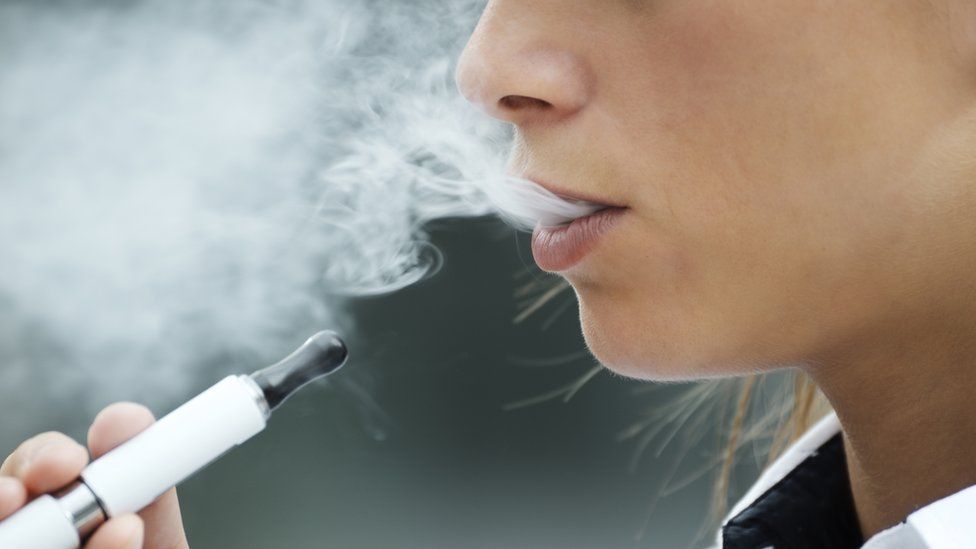Why Australia decided to quit its vaping habit?
“The horse has bolted now, they are addicted,” says Chris, a high school teacher in New South Wales.
He’s talking about students in his class, teenagers, who can’t stop vaping.
He sees the effect of the candy-flavoured, nicotine-packed e-cigarettes on young minds every day, with children even vaping in class.
“The ones who are deepest into it will just get up out of their seat, or they’ll be fidgeting or nervous. The worst offenders will just walk out because they’re literally in withdrawal.”
Those who are most addicted need nicotine patches or rehabilitation, he says, talking about 13 and 14-year-olds.
Earlier this month the government decided enough is enough and introduced a range of new restrictions. Despite vapes already being illegal for many, under new legislation they will become available by prescription only.
The number of vaping teenagers in Australia has soared in recent years and authorities say it is the “number one behavioural issue” in schools across the country.
And they blame disposable vapes – which some experts say could be more addictive than heroin and cocaine – but for now are available in Australia in every convenience store, next to the chocolate bars at the counter.
For concerned teachers like Chris, their hands have been tied.
“If we suspect they have a vape, all we can really do is tell them to go to the principal’s office.
“At my old school, my head teacher told me he wanted to install vape detector alarms in the toilet, but apparently we weren’t allowed to because that would be an invasion of privacy.”
E-cigarettes have been sold as a safer alternative to tobacco, as they do not produce tar – the primary cause of lung cancer.
Some countries continue to promote them with public health initiatives to help cigarette smokers switch to a less deadly habit.
Last month, the UK government announced plans to hand out free vaping starter kits to one million smokers in England to get smoking rates below 5% by 2030.
But Australia’s government says that evidence that e-cigarettes help smokers quit is insufficient for now. Instead, research shows it may push young vapers into taking up smoking later in life.
‘Generation Vape’
Vapes, or e-cigarettes, are lithium battery-powered devices that have cartridges filled with liquids containing nicotine, artificial flavourings, and other chemicals.
The liquid is heated and turned into a vapour and inhaled into the user’s lungs.
Vaping took off from the mid-2000s and there were some 81 million vapers worldwide in 2021, according to the Global State of Tobacco Harm Reduction group.
Fuelling the rise is the mushrooming popularity of flavoured vapes designed to appeal to the young.
These products can contain far higher volumes of nicotine than regular cigarettes, while some devices sold as ‘nicotine-free’ can actually hold large amounts.
The chemical cocktail also contains formaldehyde, and acetaldehyde – which have been linked to lung disease, heart disease, and cancer.
There’s also a suggestion of an increased risk of stroke, respiratory infection, and impaired lung function.
Experts warn not enough is known about the long-term health effects. But some alarming data has already been drawn out.

In 2020, US health authorities identified more than 2,800 cases of e-cigarette or vaping-related lung injury. The Centers for Disease Control and Prevention found 68 deaths attributed to that injury.
In Australia, a major study by leading charity The Cancer Council found more than half of all children who had ever vaped had used an e-cigarette they knew contained nicotine and thought that vaping was a socially acceptable behaviour.
School-age children were being supplied with e-cigarettes through friends or “dealers” inside and outside school, or from convenience stores and tobacconists, the report said.
Teens also reported purchasing vapes through social media, websites and at pop-up vape stores, the Generation Vape project found.
“Whichever way teenagers obtain e-cigarettes, they are all illegal, yet it’s happening under the noses of federal and state authorities”, report author and Cancer Council chair Anita Dessaix said.
“All Australian governments say they’re committed to ensuring e-cigarettes are only accessed by smokers with a prescription trying to quit – yet a crisis in youth e-cigarette use is unfolding in plain view.”
In addition to the government’s move to ban the import of all non-pharmaceutical vaping products – meaning they can now only be bought with a prescription – all single-use disposable vapes will be made illegal.
The volume and concentration of nicotine in e-cigarettes will also be restricted, and both flavours and packaging must be plain and carrying warning labels.
But these new measures are not actually all that drastic, says public health physician Professor Emily Banks from the Australian National University.
“Australia is not an outlier. It is unique to have a prescription-only model, but other places actually ban them completely, and that includes almost all of Latin America, India, Thailand and Japan.”
‘We have been duped’
Health Minister Mark Butler said the new vaping regulations will close the “biggest loophole in Australian healthcare history”.
“Just like they did with smoking… ‘Big Tobacco’ has taken another addictive product, wrapped it in shiny packaging and added sweet flavours to create a new generation of nicotine addicts.”
“We have been duped”, he said.
Medical experts agree. Prof Banks argues that the promotion of e-cigarettes as a “healthier” alternative was a classic “sleight-of-hand” from the tobacco industry.
As such vaping has become “normalised” in Australia, and in the UK too.
“There’s over 17,000 flavours, and the majority of use is not for smoking cessation”, she tells the BBC.
“They’re being heavily marketed towards children and adolescents. People who are smoking and using e-cigarettes – that’s the most common pattern of use, dual use.”
Professor Banks says authorities need to “de-normalise” vaping among teenagers and make vapes much harder to get hold of.
“Kids are interpreting the fact that they can very easily get hold of [vapes] as evidence [they’re safe], and they’re actually saying, ‘well, if they were that unsafe, I wouldn’t be able to buy one at the coffee shop’.
But could stricter controls make it harder for people who do turn to vapes hoping to quit or cut down on tobacco?
“It is important to bear in mind that for some people, e-cigarettes have really helped. But we shouldn’t say ‘this is great for smokers to quit’, says Prof Banks.
“We know from Australia, from the US, from Europe, that two-thirds to three-quarters of people who quit smoking successfully, do so unaided.”
“You’re trying to bring these [vapes] in saying they’re a great way to quit smoking, but actually we’ve got bubble gum flavoured vapes being used by 13-year-olds in the school toilets. That is not what the community signed up for.”



